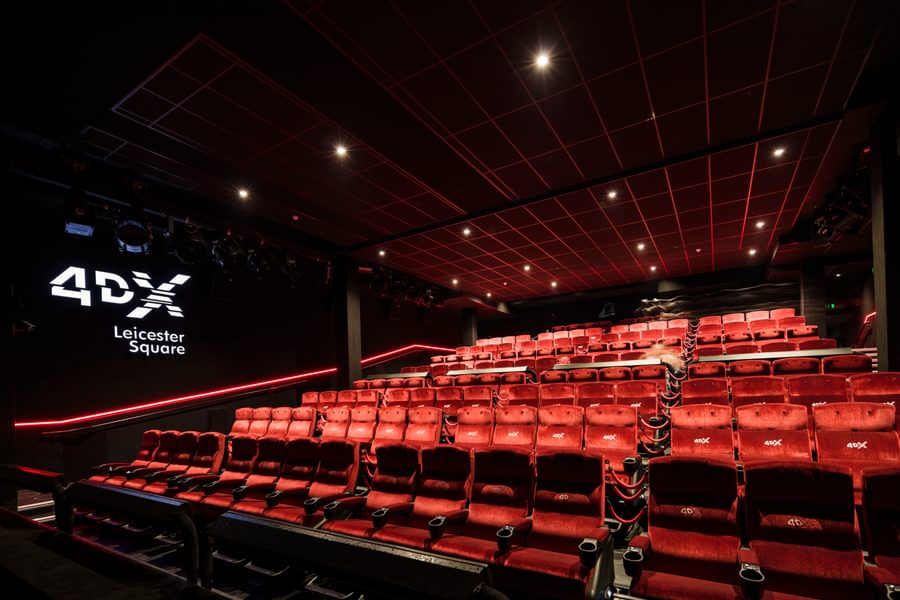
People Profile: Principal Designer Lead Peter Hegarty on the importance to clients of Chapman Taylor’s Principal Designer role
Peter Hegarty established, and leads, Chapman Taylor’s Principal Designer services for our clients. He is also a member of the in-house Technical Group and is responsible for the integration of our ISO 9001 and risk management initiatives within the design process. With over 30 years' design experience on commercial office projects, residential schemes, tenant-side retail, industrial schemes and transport projects, he has particular expertise in the delivery of detailed design solutions on complex developments. Peter talked to us about the building which inspired his love of architecture, his career path and the value to clients of Chapman Taylor’s Principal Design services.
Tell about your background and why you chose architecture as a career?
I was born in Consett in County Durham, where my father and grandfather were steelworkers. My father fought in Egypt, Greece and Italy during World War Two but otherwise worked in the local steelworks. He had a tremendous work ethic – he would take additional work whenever it was offered to him, even when woken at home in the middle of the night to do so, because he thought that he wouldn’t be asked again if he refused. I was the first in my family to go to university – I went to what was then Leeds Polytechnic (now Leeds Beckett University).
I knew that I wanted to become an architect from the age of twelve – I visited my older brother in Liverpool and, while there, visited Frederick Gibberd’s new Catholic cathedral, which made a profound impression on me at that age. I loved the dramatic nature of the space, the extensive glazing and the exposed concrete. Having grown up in a town where the buildings all tended to be red-stained, two-storey Victorian industrial buildings, this was my first real exposure to modern architecture. When I went home, I immediately started drawing plans. Coincidentally, when I did my year out from Leeds Poly to work for an architectural practice for the first time, it was for Frederick Gibberd!
Where did you work after leaving university?
After graduating, I found work at Shepherd Homes, a Yorkshire-based building company, before going to work for Abbey Hanson Rowe (AHR) Architects in London – there was a girl I knew who played a major part in that decision to move to London, and I’m happy to say that she became my wife! AHR’s London office only had two people (they are Huddersfield-based), and I ran the office for a short period, by default, when the Associate there went back to Yorkshire. That office then closed, and I found myself working for a series of medium-sized companies doing architectural work on office, residential and some retail projects.
I joined a now-defunct firm called MHM, doing mostly office work and, when they split up, I stuck with the director I had been working for when he set up a new firm in Covent Garden – it was just him and me. I spent about 12 years there, helping design fairly large office buildings (for such a small practice) or, in the quiet periods, residential jobs in the director’s home area in Kent, where I got a lot of experience doing house extensions, swimming pools and so on. I learned a lot from him about meeting the required standards of work and the nuts and bolts of being on site. It was quite hard, being young, to go onto site and get what you wanted done, but I learned how to win people around, using humour and asking them to do things in a diplomatic way.
How did you become more involved in the technical side of the work?
I had always been interested in that side of what we do, and had plenty of exposure to it as part of that two-man practice. When I joined the last firm I worked at before moving to Chapman Taylor, which was Child Graddon Lewis (CGL) Architects, I gradually began to take on those roles, particularly once I was made an Associate.
My approach has always been to never back away from a challenge – I would volunteer for different types of work, such as renegotiating the Professional Indemnity Insurance for the firm every year, conducting technical reviews of projects, instituting the Quality Assurance (QA) system there and doing some health and safety work. I worked on projects for Transport for London (TfL), including at Brixton, Elephant & Castle and Rickmansworth – I had to become familiar with very exacting requirements for those.
When did you join Chapman Taylor, and what role did you take on?
After leaving CGL, I was taken on board by Chapman Taylor in April 2015 – they were looking for somebody to join the Technical team, particularly to take on the role of Principal Designer for clients (a requirement for construction projects which came into law that September, for which the Lead Architect is the preferred candidate), while taking on Technical Panel duties and still doing some project work (initially at The Lexicon in Bracknell).
The role involves working on behalf of clients in the pre-construction phases of a project to take control of, and co-ordinate, the work of designers from a health and safety angle – influencing the way in which health and safety-related aspects of work throughout the project are carried out. It involves the safety of workers, but also of the end-users and visitors, and the ability of those using the building to maintain it safely. What was refreshing was that Chapman Taylor embraced having a Principal Designer capability – a lot of other architectural firms didn’t bother.
Larger developers and contractors take their duties in this regard quite seriously now, but our ability to offer them Principal Designer services is very useful to them in many situations. I created the firm’s Principal Designer protocols, which continue to evolve, and am shaping the role in the spirit intended by the government’s Health and Safety Executive, which wants us to get stuck in to each project in detail throughout the evolution of the design and construction phases.
Every document sent to me is read and commented on. I’m working on Brent Cross at the moment, which is quite challenging because, as a very large project, there is a constant flow of documentation which all needs to be examined in detail. I write specific reports on particular issues, whether that be the safety of handrails or the best way in which to deal with hazardous materials. If tools are to be used at all, I’ll have something to say.
What projects you have worked on for Chapman Taylor in this role?
The regulation was enacted in September 2015, so it’s still relatively early in the process, but more people are now realising that we offer this role, so we are getting asked to perform it much more frequently. As well as working on The Lexicon and Brent Cross, I have worked on a number of cinema projects we carried out for Cineworld, including at Wandsworth, Leicester Square and the O2 Arena. Generally, however, any changes I make will be small details here and there – the whole idea is to ensure that none of the projects are memorable for negative reasons.
As well as my role as Principal Designer, I also take charge of Client’s Duties on many projects – clients are bound by regulations to fulfil a number of their own requirements, and aren’t always competent to do that by themselves, so they subcontract that to Chapman Taylor (though remaining legally responsible themselves).
What else are you working on at the moment?
I am doing some work for the Crown Estate, as well as some small retail projects and a regular number of fee proposals (I’ve done over 80 – one a week, which is demanding). I am also taking on the QA role in Chapman Taylor – we have just transitioned from the old QMS (Quality Management System) standard to the new one. We are trying to engage people much more, and we are working to incorporate more diagrams and visual content in our literature so that it isn’t just page after page of text.
I am a member of the Technical Panel too, and we do audits on the QMS and also Project Health Checks, looking at all kinds of issues from construction drawings to the use of BIM. Our role is to ensure that construction detailing and layouts are compliant with regulations and good practice to avoid time and money being spent detailing and developing from the basis of a mistake, all of which would then have to be undone. We particularly look to ensure that the design fits within the regulatory framework and the highest standards.
I also do CPDs (Continuing Professional Development tutorials) on health and safety, which have been very useful in terms of getting the message out and also for demonstrating that everyone in Chapman Taylor understands the latest developments and requirements. The slides for these CPDs are sent to the other UK studios (in Bristol and Manchester) to be presented by members of staff there, so that all three studios are learning the same things. In addition, I talk about health and safety issues at the monthly breakfast meetings at the London studio.
Do you ever get angry when you see poor or unsafe design/construction elsewhere?
I do – if I see a building environment which I know to be hazardous or a threat to life and limb, I will phone the local building control unit to complain – for example, when a contractor didn’t have a hoarding around the site, with mud spilling all over the road and construction materials being carried unsafely past children. I wrote to the planners about the documents these contractors should have submitted in order to get permission to build, but hadn’t – they were pretending that they were building something much smaller. It made me angry enough to force the issue with the authorities.
How do you see your role evolving?
Instead of writing out a long list of risks, which nobody likes reading, my preference would be to have the risks shown on drawings which the contractor can envisage much more readily. It is something I would like to see become the norm in the near future, particularly if incorporated into BIM (Building Information Modelling) 3D models, which would greatly enhance the ability to co-ordinate responses to those design risks among the various teams involved in construction. Virtual Reality and Augmented Reality technology can also be used to this end – we may see contractors walking around with headsets on in the not-too-distant future.
I am also talking to the various teams at Chapman Taylor about processes – how each team does its work, and to what end. From this information, a graphic representation can be created showing how the parts of the company fit together and how each person’s role contributes. It has been interesting to do, because it displays patterns in the ways things are produced and is quite revealing. This will eventually be made live, so that people can click on a team’s or individual’s area of expertise and see exactly what they do and how it affects other business areas. That will make it much easier to find information for occasions such as audits, as well as to identify measures which can be taken to ensure continual improvement.
How have clients and contractors responded to Chapman Taylor’s Principal Designer work?
Having someone there whose role is to keep on top of the health and safety side of a project is very important to them – the reputational damage and costs to them would be huge if something went badly wrong as a result of a design or construction mistake.
Clients such as Hammerson are appreciative of what Chapman Taylor does for them in this regard, both in the Principal Designer role and the Client’s Duties role, and it helps drive repeat business for us. It is satisfying to know that these aspects of what we offer make a major difference to the standard to which a project is delivered, and to the reputation of Chapman Taylor as a company which is industry-leading in the provision of these services.



